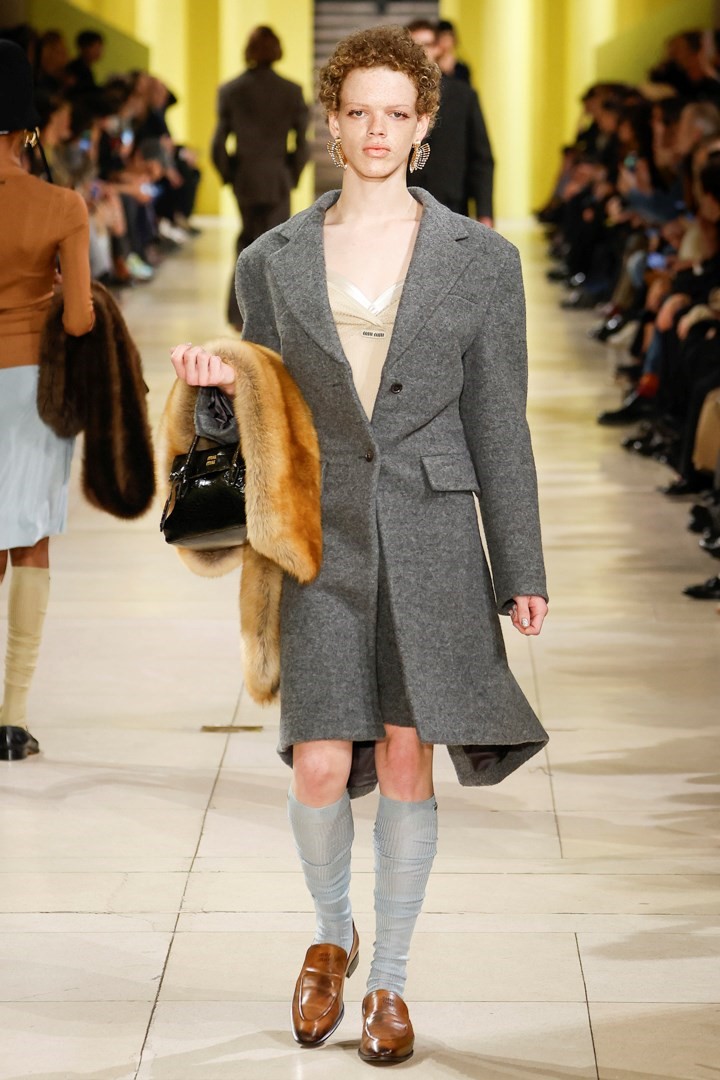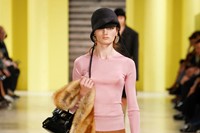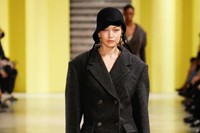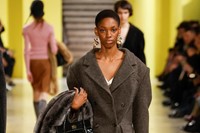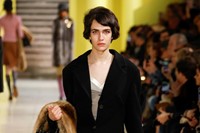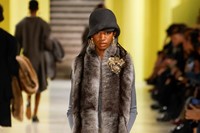Femininity has always fascinated Miuccia Prada – in fact, make that femininities. Because the idea is never static nor fixed, and she avoids all cliché, consistently excavating our ideas of what it means to be a woman, and her own personal experience. It was the foundation of the Autumn/Winter 2025 Prada show she designed two weeks ago alongside Raf Simons in Milan, and “femininities” was the title she gave to her latest collection. It’s an idea she isn’t ready to let go of.
That’s because Miuccia Prada has a lot to say about women. She said it this time with curves. “Bold” was the word she used, a lot, and this Miu Miu collection was, right from the get-go. The first look was an easy bias-cut slip skirt, and silk jersey top stretched taut over a structured brassiere, creating an eye-popping, pneumatic silhouette than managed to look both retro – in its nod to the liberation of the 1920s (cloche hats were everywhere), and to the hyper-femininity characteristic of the 50s and 60s – and also bravely new. There’s something very modern about such forthrightness about the body, a consciousness and pride in its form, an unapologetic femininity. There’s also the notion of casting aside the objectification of the past, nixing the Second Wave Feminist notion of eschewing the trappings of the feminine as restrictive and re-embracing all that was seen as restrictive, reappropriated and revalued.
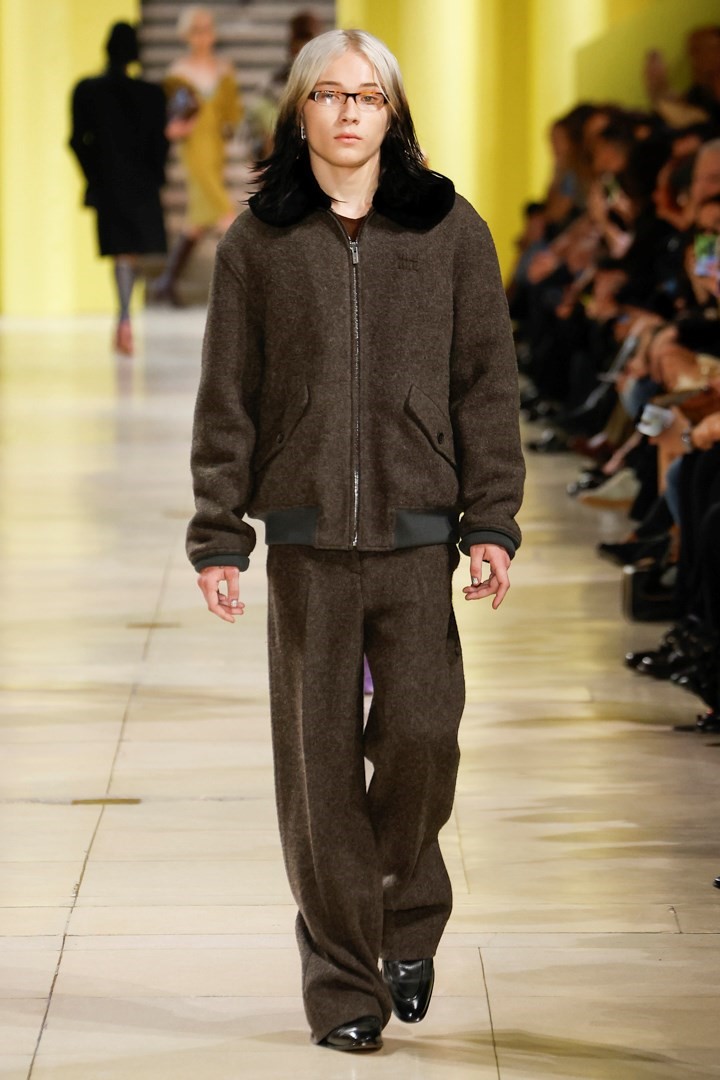
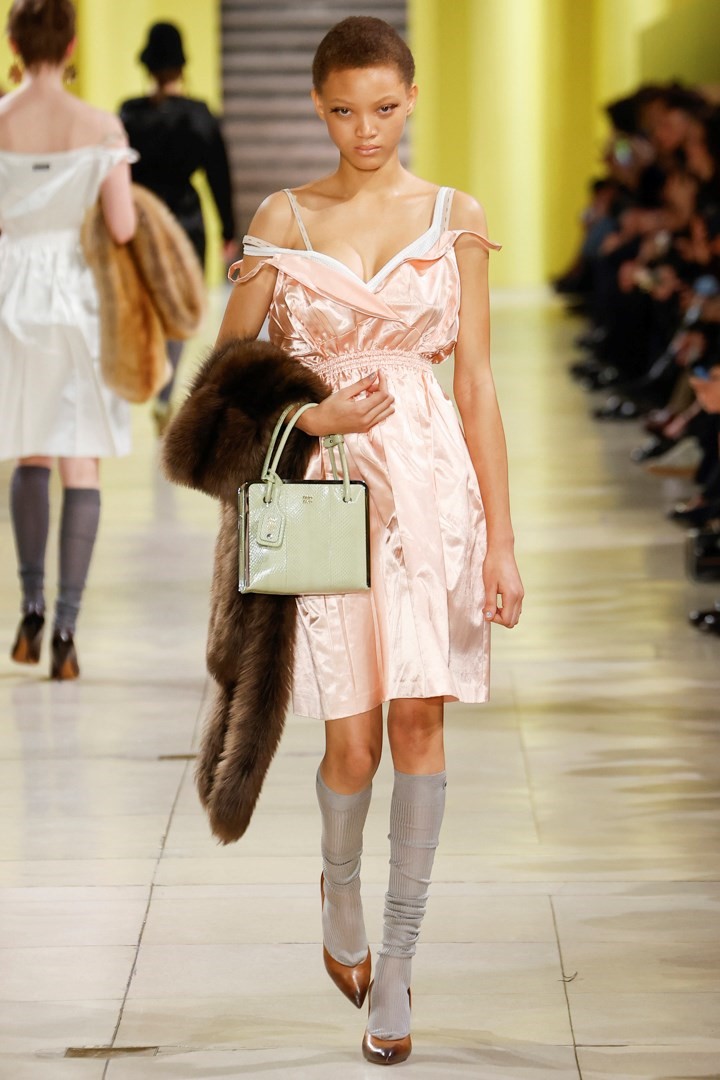
Miuccia Prada herself, of course, tussled with those ideas, with her attraction to fashion. “I always say [fashion] was the worst place for a feminist in the 60s,” she once told me. “I always accepted my love for clothes, but I didn’t want to enter into the fashion business, but I did it I think because I probably liked it. And the liking of doing it was more than the theoretical dislike.” But this was no deep feminist cant – they’re just ideas Miuccia Prada has always explored, always been interested in. The lives of women – exterior and interior – preoccupy her.
She is also the rare designer who is willing to make a statement around the bigger picture. She spoke of a sense of tension and anxiety – for fear, which backstage she more directly connected with the masculine war-mongering of now. Toxic is too light a word. So there was a utopian idea to Prada’s all-out all-in Miu Miu femininities, the softness of curves twisting masculine felt tailoring, like a tussle between genders in which women won out. And far from fripperies, the idea of feminine accessories – jewels, furs – elevated everyday items, to give them a notion of importance. The items themselves aren’t clichés, but our opinions of them are.
The really interesting thing about this pluralist collection was how it made you imagine. Rather than a static, singular vision, a model to base everything on, the women here were ever-changing – femininities, see – each with their own stories. Why was her make-up that off shade of pale lilac? Why was her hat askew, her hair so fucked up? Why was she wearing lurid purple go-go boots with what looked like a school uniform skirt, and her mother’s brooch? And what exactly was going on under those blouses? Where, when, why? But not the what – because we got who she was, a fully rounded, fully revised character. Not an archetype, but a human being. And that’s still a radical concept in fashion today.
